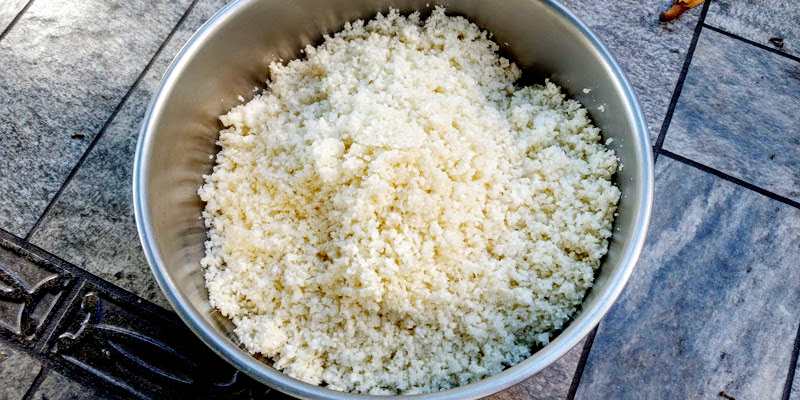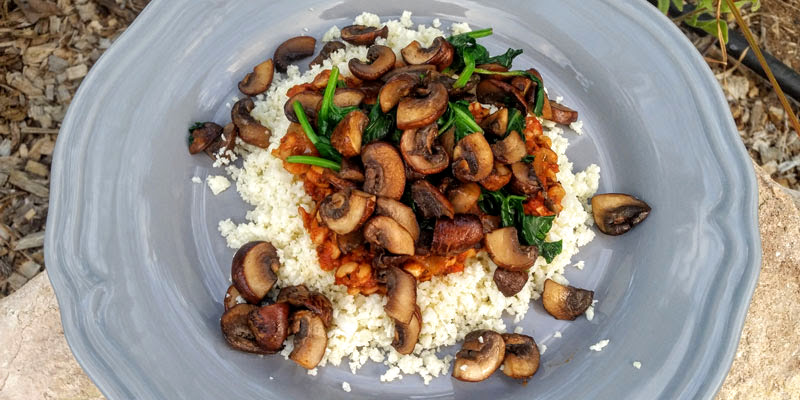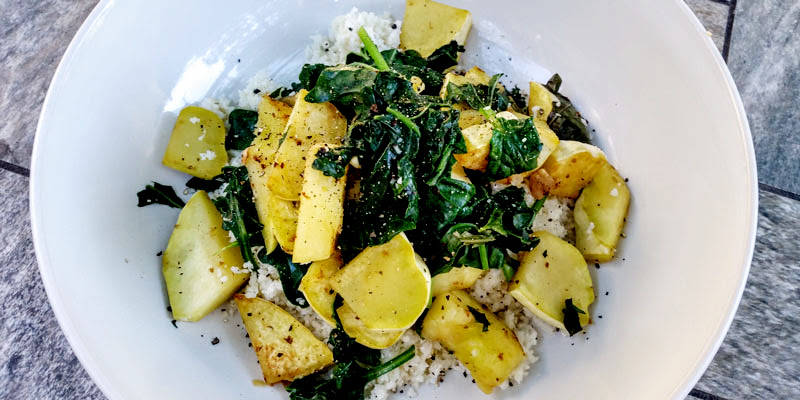 There are some foods in life that make you feel like you just won the nutrition race. You pat yourself on the back every time you eat them. Green juices, blueberries (antioxidants!), kale salad – these are just a few of the top tier health foods of the day.
There are some foods in life that make you feel like you just won the nutrition race. You pat yourself on the back every time you eat them. Green juices, blueberries (antioxidants!), kale salad – these are just a few of the top tier health foods of the day.
Cauliflower couscous might be on the rise as one of these golden children of healthy eating. Likely fueled by the current popularity of the Paleo Diet, this alternative to grain-based couscous (which is just a pasta in pearl form) is popping up all over the place. People who eat paleo avoid grains and so traditional couscous would be off the list.
Vegans aren’t opposed to veggie-based foods either. Hey, we’ve been doing it for years! And though pasta beckons, we know that anything can be eaten in excess and sometimes it’s good to take a grain break.
So, what is this novel version of cauliflower? Well, it’s super simple. So simple, it’s not even worth doing a step-by-step tutorial, but here it is anyway:
- Cut the cauliflower you have on hand (a whole head, many heads, or whatever’s leftover from last night’s curry) into smallish florets.
- Put the cauliflower florets into your food processor and pulse the processor until small grains (couscous, if you will) start to form.
- Eat raw or sauté in some olive oil with salt until the cauliflower starts to brown.
That’s it!
A tip:
- Depending on your food processor and the amount of cauliflower you have, you might want to start off with a small amount of florets in the food processor so that all of them get processed. If there are some left in tact, you can remove them and process them in the next round.
What can you do with this couscous? Oh man, what CAN’T you do with it! It is just this perfect addition to everything. Use it with anything you want to give a boost to – salads, sautés, soups, etc. It’s great to have in a container in the fridge because it can serve as a based for any bowl you might want to make with the leftovers in your fridge. It takes the place of rice, pasta, and even greens.

Cauliflower couscous topped with tempeh (in a tomato sauce), spinach and mushrooms.
If you are one of those people who isn’t that into the taste of cauliflower, this might be the perfect gateway version to the, admittedly, sometimes boring cruciferous (that’s the type of vegetable the cauliflower is, along with broccoli and cabbage). Cauliflower couscous, with all that surface area, can take on the sauce of any dish it is a part of and can mix in so well it almost hides – so there can be no strong cauliflower flavor if you don’t want it.
For some reason, cauliflower seems like it wouldn’t be the most healthy of veggies. The leafy greens really get all of the attention. But, just because cauliflower comes in a stark white version (though there are SO many fun, colorful versions – visit your local farmers market!), this does not mean that it is lacking in nutritional value.

Cauliflower couscous topped with pattypan squash and spinach sautéed with garlic.
There is a ton of vitamin C in cauliflower. (Vitamin C – it’s not just for oranges!) There are also hefty helpings of B vitamins and vitamin K. One thing that is getting more and more attention are the phytochemicals in cauliflower. Research into the health benefits of phytochemicals is ongoing but may aid in disease prevention – stay tuned!
In the meantime, eat your cauliflower couscous for the many other delicious and health promoting reasons.
- Cauliflower
- Oil (optional)
- Salt (optional)
- Cut the cauliflower you have on hand (a whole head, many heads, or whatever's leftover from last night's curry) into smallish florets.
- Put the cauliflower florets into your food processor and pulse the processor until small grains (couscous, if you will) start to form.
- Eat raw or sauté in some olive oil with salt until the cauliflower starts to brown.
Subscribe for access to the
free Becoming Vegan email course!

Leave a Reply